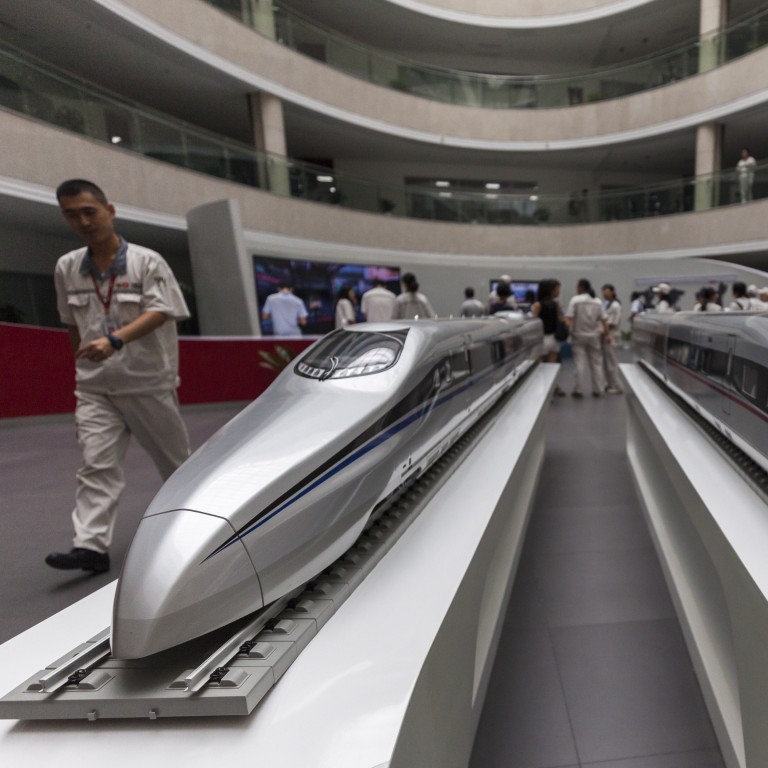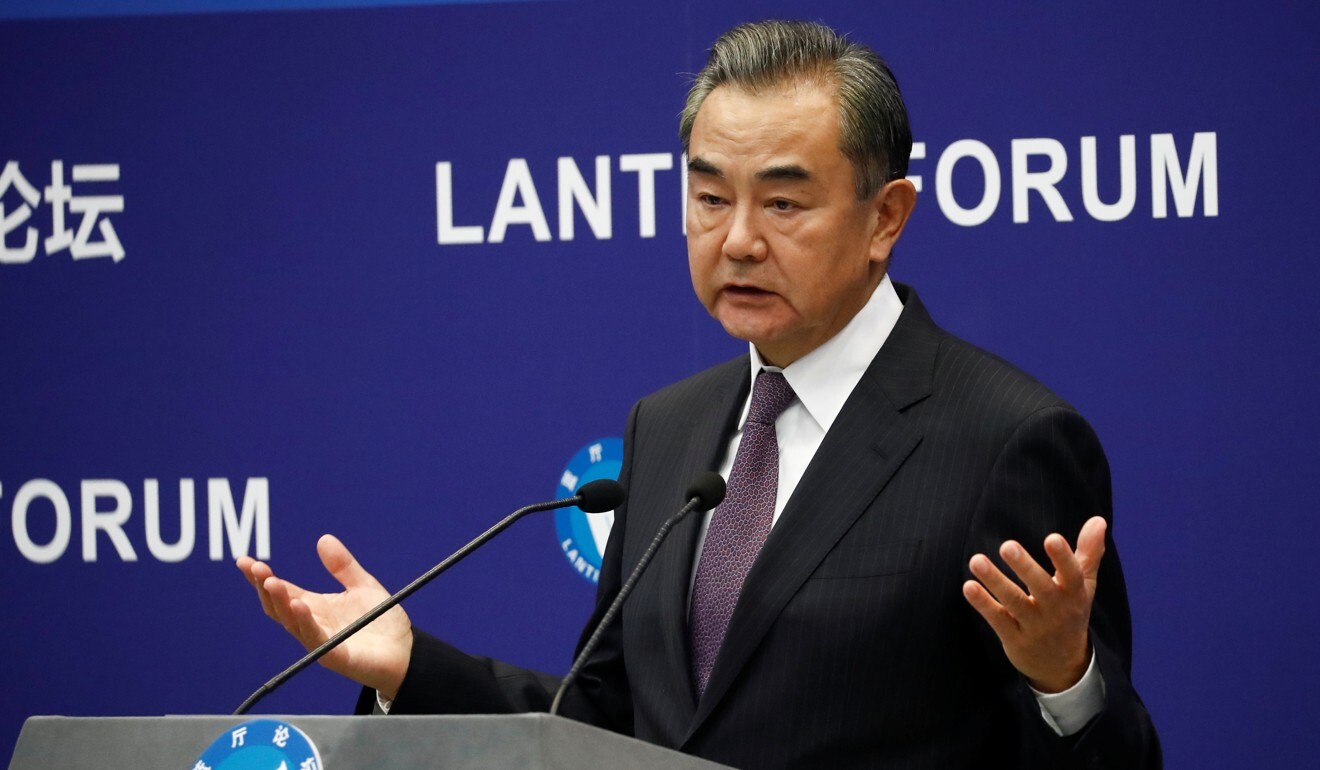
What China’s struggles with a Thai railway say about the Belt and Road
- After years of stuttering progress on a 250km high-speed rail link, Chinese Foreign Minister Wang Yi is expected to sign a deal in Bangkok this week
- Experts say the key Belt and Road project shows how, contrary to perceptions, Southeast Asian nations have significant leverage with China
Progress on the high-speed line has stuttered for several years with Thai authorities uneasy over the high interest rates charged by Chinese financing, the track design and even the need for the scheme.
Explained: Belt and Road Initiative
In September the Thai cabinet released a fresh portion of US$380 million cash to purchase Chinese-made bullet trains and tracks.
Thitinan Pongsudhirak, the director of Chulalongkorn University’s Institute of Security and International Studies in Thailand, said China’s top diplomat “would want to resuscitate this rail project, otherwise there is no purpose or no use having a railway all the way from Vientiane but not coming through Thailand.”
Part of the vision consists of the high-speed rail line running from Kunming to Singapore, criss-crossing across several Southeast Asian countries.
BARGAINING POWER
Contrary to perceptions that some of these countries may have little bargaining power vis-à-vis China, Selina Ho, a Lee Kuan Yew School of Public Policy international affairs professor at the National University of Singapore, said factors such as location, size, and state capacity had given some Southeast Asian nations leeway in negotiating and implementing their part of the railway project with China.

Ho was speaking at a recent online event organised by the Hong Kong University of Science and Technology’s Institute for Emerging Market Studies to mark the launch of her book Rivers of Iron: Railroads and Chinese Power in Southeast Asia co-authored with David Lampton and Cheng-Chwee Kuik.
Other bargaining tools that Southeast Asian countries had in negotiations with China were their domestic politics and public opinion, Ho added.
Thailand’s US$12 billion high-speed railway: one-way track to debt?
Pointing to Malaysia and Indonesia where leaders had been attacked “for selling their countries to China”, Ho said concerns over how and whether locals would benefit and whether jobs would be created could strengthen these countries’ bargaining positions.
“They can tell China, look, I am putting my domestic position at stake here, you have to give me more concessions,” Ho said.

02:35
Belt and Road Initiative explained
CHINA’S LEARNING CURVE
Turning to the difficulties faced by China in the construction of the railway, Ho cited Chinese companies’ unfamiliarity with the different political systems.
A case in point is in Indonesia where land acquisition – the first step in the construction process – often resulted in delays due to resistance from local governments, Ho said, pointing out that 29 districts and 95 villages in West Java were directly affected by the Jakarta-Bandung high-speed railway construction.
“So you can imagine the amount of difficulties Chinese construction companies face, as they deal with powerful local authorities, and the very strong land tenure laws in Indonesia,” Ho said.
Other issues such as bureaucratic resistance, compensation for the loss of land, labour laws, procurement standards, environmental protection, even the clearing of unexploded landmines had also made the process a steep learning curve for the Chinese, Ho added,
Thailand gives green light for US$7.4 billion high-speed rail link
“It is not so easy for [China]. There is a lot of trial and error, a lot of learning in the process,” Ho said.
Kuik, who is head of the Centre for Asian Studies at the National University of Malaysia’s Institute of Malaysian and International Studies, said China’s railway construction had not gone unnoticed by other powers who had come up with alternatives such as the EU-Asia Connectivity Strategy aimed at improving Europe’s economic connectivity to the emerging economies of Southeast Asia.
Turning to the wider picture of China’s experience in building infrastructure around the world, long-time China watcher David Lampton said China had learned and adapted from the problems and experiences it had encountered elsewhere, and was now paying greater attention to risk analysis as part of its project assessment and approval process.
Beijing had also learnt that its partner countries were not only concerned with its ability to construct large projects quickly and competitively, but also with quality and long-term viability, said the professor emeritus at Johns Hopkins-SAIS.

In recent years, China has undertaken massive infrastructure-building efforts in Africa, Latin America, as well as South and Southeast Asia in projects ranging from rail, roads and ports to dams, power plants and bridges.
In Venezuela, where China has found itself committing enormous funds to what has turned out to be an insolvent regime under Hugo Chavez, Beijing had learned the importance of undertaking greater political and financial risk assessment “that was up to global standards”, Lampton said.

Set up in 2016, the AIIB is aimed at offering finance to infrastructure projects, and has promised high standards of governance based on international best practices.
Turning to the recurrent problem of China using its own workers, materials and equipment in overseas projects – moves which have been criticised by host countries – Lampton said Beijing appeared more sensitive to this problem now than in the past.
“But the pressure is still very great to maximise Chinese materials and labour to meet domestic employment and economic growth targets, even if it creates tensions with the project country,” Lampton said.
On the whole, China was learning how to be a more formidable international competitor, Lampton said, even though the progress appeared “slow and uneven”.
Additional reporting by Vijitra Duangdee

